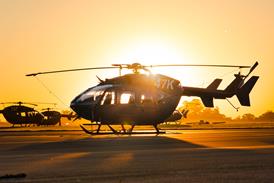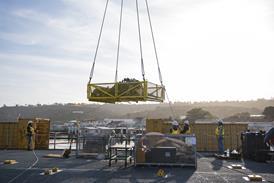Two of the flag carriers worst hit by the Asian currency collapse - Philippine Airlines and Indonesia's Garuda - have taken vital steps back from the abyss.
PAL has resolved key labour problems while Garuda has renegotiated crippling US-dollar aircraft leases and gained government approval to increase domestic fares.
After a dramatic all-night meeting in mid-September, PAL's biggest labour union, the Philippine Airlines Employees Association (PALEA), agreed to suspend its collective bargaining agreement (CBA) with management. This means that it will forego annual pay increases and the right to strike for the next 10 years in return for shares and board seats.
Suspension of the CBA was a key condition demanded by PAL's creditors - chief among them Airbus and Boeing - as PAL prepares a survival plan for the Philippines Securities and Exchange Commission (SEC) which is administering the national carrier's receivership. The plan was expected to go to the SEC at the end of September.
PAL, already facing bankruptcy because it was unable to meet US-dollar leasing payments on a vast new fleet when the Philippines peso collapsed last year, was pushed over the edge when pilots went on strike in June. PAL had accumulated debts of $2.2 billion.
PAL retaliated by sacking its 620 pilots, 1,400 cabin crew and about 4,000 ground staff. Only 200 pilots and 600 cabin crew were re-employed, their unions drastically weakened. Staff numbers were slashed from 14,000 to 9,000, leaving PALEA as the dominant voice of the labour force.
In return for industrial peace, PAL's 70% owner, tobacco magnate Lucio Tan, has agreed to give PALEA members 30% of his holding in the airline - about 20% of PAL stock overall - and three out of the 15 board seats. With Tan's personal investment in the airline valued at about $360 million, the concession he has given could be put at more than $100 million.
Several years ago, PAL embarked on an expensive fleet re-equipment, with orders for 36 Boeing 747-400s and Airbus A320s, A330s and A340s. Only 20 aircraft had been delivered before the June crisis, which cost PAL about $60 million alone. Most of these aircraft are now parked, racking up huge losses. The carrier's international network has been slashed by 80% and the domestic network by 70%. PAL's restructuring plan proposes that the airline operate between 21 and 25 of the 53 aircraft in the fleet.
Garuda, meanwhile, is still operating about 50 of the 57 aircraft in its inventory. Operating hours, however, have been dramatically reduced in line with a shrinking market, the one positive spin-off being the positioning of spare aircraft to improve on-time departure efficiency to nearly 90%.
Garuda's new corruption-busting chief executive, Robbie Djohan, who has sacked most senior executives and cancelled airline contracts that benefited cronies of the former Suharto regime, has been in Europe renegotiating top-of-the-market lease rates. The airline was paying more than $1 million a month per aircraft for six Airbus A330s, but the renegotiated rate is nearer $750,000.
Garuda's eight A300s are on the market and the airline has also deferred or cancelled delivery of new Boeing 737s. Six MD-11s, which used to run some services to Japan, Europe and the USA, have been returned to lessors.
At the same time, the Indonesian transport ministry has approved a Garuda application to increase domestic air fares by 60% in two tranches - up 40% from 1 September with a further 20% hike from December - to reflect the local currency collapse. Under the current regime fares on some routes are as low as $20.
Source: Airline Business























